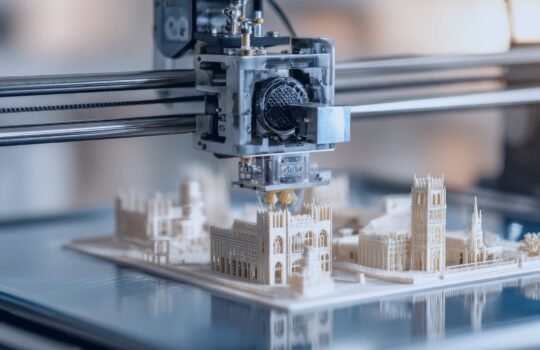How do you prepare students for a world where technology changes fast? One answer is 3D printing. Schools and universities are adopting it as a core learning tool. It gives students a way to design, create, and test ideas in real time. This shift makes education more practical and aligned with the skills industries demand.
How Does 3D Printing Improve Learning?
Hands-on learning with real models
Students learn better when they build things with their hands. 3D printing allows them to take ideas from a screen and turn them into physical models. In science classes, this could be a working model of a cell. In engineering, it could be a prototype of a bridge. Students see results quickly, which makes lessons stick.
From theory to practice
Abstract concepts often confuse students. A 3D model brings clarity. For example, printing a DNA helix makes biology more visual. Architecture students can create scale models of their designs. Medical students can print organs to study anatomy more effectively than with pictures in a textbook.
What Benefits Does 3D Printing Bring to Schools?

Engagement and creativity
When students create their own designs, they engage more. They take ownership of the process, from concept to finished product. This builds confidence and sparks creativity across subjects.
Skill development for the future workforce
3D printing teaches skills that go beyond the classroom. Students learn CAD software, design thinking, and problem solving. They also gain an understanding of manufacturing processes. These are the same skills companies in engineering, healthcare, and design look for.
Cost-effective prototyping in classrooms
Schools often spend heavily on pre-made models and kits. With a 3D printer, they can produce these materials on-site. For example, instead of buying expensive anatomical models, a school can print them at a fraction of the cost.
Where Is 3D Printing Already Making an Impact?
- K-12 schools: Elementary and high schools use 3D printing for projects in history, science, and art. Students might print historical artifacts, build models of planets, or design sculptures.
- Higher education: Universities are investing in advanced 3D printing labs. Engineering and architecture students design and test complex structures. Medical schools print patient-specific models to train future doctors.
- Special education: Teachers create custom tools tailored to the needs of students with disabilities. For example, tactile learning aids help visually impaired students understand shapes and objects.
What Opportunities Will Shape the Future of Education?

Personalized learning materials
3D printing enables custom tools for different learning levels. A teacher could create unique math manipulatives for struggling students or advanced design challenges for high achievers.
Remote and hybrid learning
As more students learn outside classrooms, schools could provide digital designs that families print at home or through local makerspaces. This keeps hands-on learning accessible, even in remote settings.
Collaboration with industry
Schools can partner with local companies for joint 3D printing projects. Students work on real-world problems and gain early exposure to professional standards. This bridges education with industry needs.
Challenges Schools Need to Overcome
Adoption is not without hurdles. The cost of machines and materials can be high for smaller schools. Teachers need training to integrate 3D printing into lessons. Curricula must adapt to include projects that go beyond basic use of the technology. Solving these challenges will require investment and planning, but the long-term benefits outweigh the initial barriers.
Conclusion
So how will 3D printing shape the future of education? By making learning practical, engaging, and career-focused. Students learn by creating, not just memorizing. They gain skills that industries value. Schools that embrace 3D printing today will prepare their students to succeed in tomorrow’s workforce.






